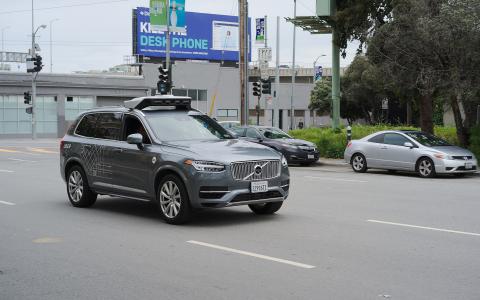
(Forbes)
OBSERVATIONS FROM THE FINTECH SNARK TANK
In an article titled Uber is making a fintech push with a New York hiring spree, CNBC reported that:
Uber is expanding its financial services efforts by hiring several dozen engineers and product managers in New York, [which] could eventually exceed 100 workers. Uber is looking to tap New York’s talent pool, which is deeper when it comes to fintech and bank workers than its hometown of San Francisco. Uber is currently shopping for a block of office space as large as 300,000 square feet."
It's No Mystery That Uber Wants In On Banking...
That Uber has aspirations to get into financial services should come as no surprise. After all, everyone and their mother thinks they can be a bank these days. According to CNBC:
By building out its financial ecosystem, the company can increase its lead over rivals like Lyft. The efforts are likely to be focused on ways to increase engagement and loyalty to the Uber platform. Creating a bank account has been discussed at a high level at Uber but may be years away, or the company could decide against it. If it pursued a bank account, Uber would likely partner with an existing FDIC-insured bank rather than get its own charter. Most fintech firms rely on a small group of institutions like Cross River and Celtic Bank to offer banking services."
...But Why Does It Need 100 People?
If, as the report indicates, Uber partners with existing FDIC-insured banks for its own charter--and can get digital banking services from any number of providers--then why does it need more than 100 people and 300,000 square feet of prime office space in New York (at a cost of about $24 million per year)?
Efforts "focused on ways to increase engagement and loyalty to the Uber platform" are probably just a small part of Uber's plans for 100+ fintech people and 300k square feet of office space.
Does The World Really Need Another Fintech Startup?
Uber can "increase engagement and loyalty" with a rewards program and a mobile app--and, in fact, it already is. The last thing the company needs to do that is hire "bank workers" based in New York.
Uber's plans may be far bigger than just increasing engagement and loyalty--it may be looking to become a full-service financial services firm.
Does the banking world really need one more self-delusional technology company who thinks (erroneously) that consumers are yearning to leave their existing financial providers? No.
But Uber may be able to do just that by serving a segment of the market with unique needs--much like USAA does with the military segment.
Can Uber Become the USAA of its Target Segment?
USAA was started because creditworthy military officers were unable to get auto insurance because their residence changed so often. Since then, USAA has not only grown into a financial services powerhouse serving military members and their families, but has become one of the most innovative financial services providers with the highest Net Promoter Scores in the industry.
While the company probably wouldn't describe it like this, the customer segments it serves is like a bulls eye. In the center of the bulls eye is the active, deployed military member. USAA designs all it products, services, and processes around these members--even though they don't comprise the majority of the firm's members.
By serving that segment--with its unique needs--USAA creates sufficient capabilities to serve the next ring of the bulls eye, the active, non-deployed military member as well at the next ring of the bulls eye, non-active military members.
The Rings of the Uber Bulls Eye
The best prospects for Uber financial services aren't the firm's customers--it's their drivers.
According to one survey, a little more than half of rideshare drivers are 30 to 49 years old, and a third are either African-American or of Hispanic heritage.
Another survey found that nearly four in ten Uber drivers rely on the rideshare service for the bulk of their income.
In addition, almost half (47%) of drivers have not purchased rideshare insurance.
This is the bulls eye of Uber's financial service target market: The older Millennial/Gen X, non-white driver who relies on the service for his income, with unmet insurance (and very likely) borrowing needs.
The next ring of the Uber bulls eye are the nearly one in five Uber drivers who, in addition to driving for Uber, have other “gig economy” jobs (presumably with inconsistent income patterns).
Outer rings of the bulls eye contain other drivers who rely less on Uber for their income, but may still benefit from insurance or loans provided by the rideshare service.
Uber's Financial Services Opportunity
A number of Neobank startups have come into the market touting a narrow range of differentiating features like better-designed apps, early access to paychecks, or better PFM tools. The viability of this approach has yet to pay off (if it ever does).
In contrast, Uber's financial services opportunity is in providing a wide of services to a relatively narrow segment of consumers--its drivers, not its passengers--whose banking needs are underserved today.
To build the financial services ecosystem required to provide these services might require the 100+ people that Uber intends to hire in New York, and having "bank workers" among those employees might be helpful, as well.
Which only leaves the mystery of the 300,000 square feet of office space. With even 150 employees, that's 2,000 square feet per person. That's like a whole house for each employee. That's one sweet office.



